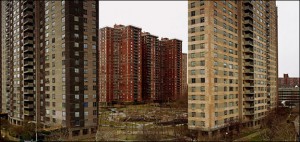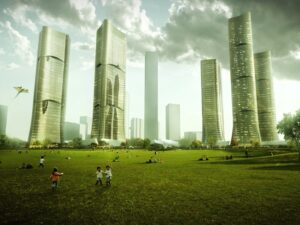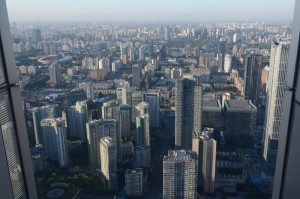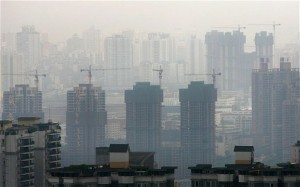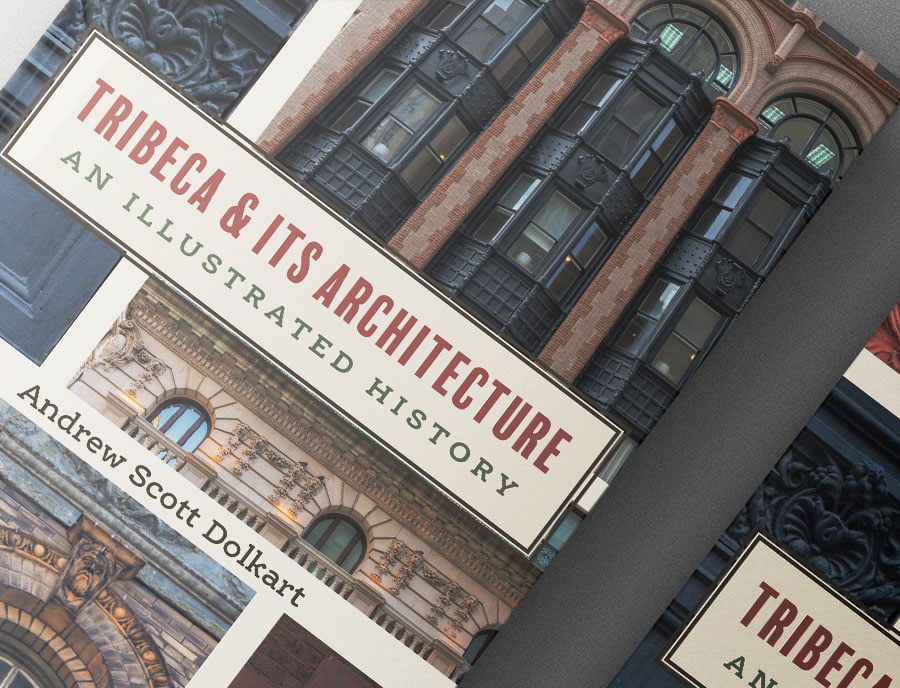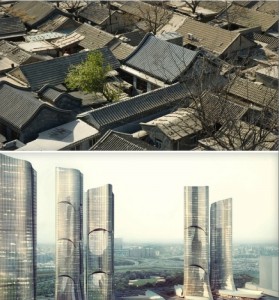
The Challenge
The media reports that Mayor DiBlasio wants to build or preserve 200,000 affordable housing units. At the average household size in New York of 2.59 persons, that would be housing for 518,000 people.
It is a big ambition. So let’s do a thought experiment. How much will it cost to realize that ambition –– through building alone? The answer is $69 billion, about equal to the city’s total budget for a year. That figure comes from a report to the New York City Housing Authority. It says the average cost of building a single affordable housing unit is $346,000. Multiply that figure by 200,000 and you get $69 billion dollars.
Who will pay for it? Bloomberg has already raised property taxes to the point where they constitute 27% of city revenue. He might try raising Business Income Taxes, which make up a mere just 8% of city revenue. But that too will provoke an outcry – a more powerful and organized one at that. But let us be imaginative. Assume the mayor can find the money.
Can the city build actually so many units so fast?
That is not so clear. Between 2008 and 2011, according to the website The Awl (www.theawl.org), New York had a net gain of 65,000 housing units over the 4-year period, which is more like 14,000 new units a year. If the private developers kept going at that rate, and the mayor arm-twisted them into making 50% of those new units affordable via an inclusionary zoning deal, we’d get 32,500 new affordable units in the next four years. Not enough to meet the target. (Top-down planning is always tough like this).
Mitchell-Lama units at Co-op City (top) and more Beijing renderings (below).
To reach the target, the mayor would have to increase the the background rate of construction by a factor of 6. It also means giving developers an incentive to go all out. Why? Because they aren’t going to include more affordable units in their regular market rate plans without demanding something in return. They would call it a takings on their profits. The average cost per square foot is around $400. If you can turn around and sell that built-out square footage for $1500 or $2000 a square foot to an international oligarch, wouldn’t you? No, developers will not accept a mere 6% rate of return instead of a much more thrilling 150% rate of return.
So what do developers want? What will they ask the mayor in return for playing the mayor’s game? They want the right to build anything, anywhere, without constraints. Constraints would be landmarks concerns, contrary ideas to REBNY’s about what makes a city worth living in, historic districts, and pesky zoning rules.
So hang on for a wild ride. It will be an undertaking to rival Beijing’s construction frenzy, and it could easily turn the city into chaos while all the building goes on.
Whatever happens, it will literally change the face of New York in a short period of time. There are three questions for those of us who love New York and don’t have country retreats to which we can escape the impending chaos. One, where will the new units be built? Two, what will all the new buildings look like? Three, would we get a city worth living in?
Think about the problem of where to build. The outer boroughs seem attractive at first glance: they have the cheapest land. But developers don’t want to build there, at least they don’t want to build market rate units there. It is hard to sell overpriced condos to international oligarchs in the outer boroughs. That kind of buyer wants Manhattan. They want views of Central Park. They want views of whatever is left of Tribeca and SoHo and the Woolworth Building.
Okay, so let’s keep searching for spare land in Manhattan and prime Brooklyn. What about a tax on all the parking lots in the city? Definitely not a bad idea if you are against cars. Such a tax might make the parking lots owners sell or develop the lots. The bike lobby will certainly go for it. But in Manhattan, there may not be enough acreage if you are thinking of low or medium density housing. So keep looking. What about all that unused green space in the public housing projects? You know, the space that was part of the failed garden city idea? Why not uproot the grass and trees there and build more units? Definitely an option, a cruel one perhaps, but an option. It feels like inflicting another blow on what was a mistake in the first place. But piling one mistake on another is only a problem for those who have to live in the place, not for those who build and design it.
That is where it gets exponentially scary.
The ideologues of urban hyper-density (Vicki Been at the NYU Furman Center, Real Estate Board of New York, Edward Glaesser, SHoP Architects, and Vishaan Chakrabarti) want to build in Manhattan and prime Brooklyn, preferably in spots where great views can be had. They want to build near the historic districts. They won’t come right out and say it, but you get the feeling they’d love to bulldoze most of them. They are upset because there is something in their way, mainly, the existing city. Much of that existing city is stunningly beautiful and represents the true DNA of New York (as opposed to skyscrapers which turn NY into anywhere USA). Most of it is unprotected (only 3% of lots in the city have any degree of landmarks protection). To the cheerleaders of hyper-density, it is the historic city, the distinctive city, the low and medium density walkable neighborhoods that are standing in the way of their goal. They want to be rid of all that. All that is a monkey on their back.
It gets worse. Their diabolical strategic coup is to use the affordable housing problem as a Trojan Horse to beguile the city council into revising the zoning and create a new transferable air rights market. One idea they really like: take the air rights out of landmarks and historic districts and transfer those air rights onto other development sites. And relax the zoning. Let REBNY ‘s consultants rewrite the code, if possible.
The underlying idea of all this: launch a Dubai-like building boom and put wildly tall skyscrapers everywhere. As a sop to the political system and the mayor, they will deign to negotiate a deal in which a percentage of the new units will be 200-square foot “micro-units” for the poor and middle class (see photo). DiBlasio will get his affordable housing and the hyper-density fanatics will get their vision of Dubai-on-the-Hudson.
It is a Faustian deal with the devil. (In Goethe’s story, Faust ends up a literally a real estate developer building dykes to push back the sea, building a giant castle, and irrationally kicking out a couple of old peasants living in a charming old house.) Be clear. It is a breathtakingly horrible vision.
The worst part is that it is happening already through the time-honored strategy of incremental creep via business-as-usual. Get up from your desk and take a long walk through Manhattan. Anyone can see we are at a tipping point between REBNY’s Dubai-like vision for the city and the alternative vision of a distinctive, walkable, liveable city that Jane Jacobs loved.
The social dynamics of all this is somewhat humorous, but in a kind of sick way. We might worry about the symbolic craziness of oligarchs living in the upper floors and penthouses and traveling to their friends houses by bridges that go from skyscraper to skyscraper. They’d get separate entrances that whisk them up to the top, or maybe they’ll ride Jetson-like vehicles so they won’t have to touch ground (where you will be). Won’t they miss nature? Don’t they need it like we do? Alas the answer is no. First of all, they are literally in the heavens. And they can always, as did Ian Simpson, (an architect of all those hideous mega-skyscrapers in London) import their own cork forest from Portugal into their penthouses to add to ther own personal oxygen supply. They will also build a rooftop helicopter landing pad to enable the rush off to the country estate.
It is a vision that leaves the street-level in darkness, where trees will no longer grow. It leaves that to us. It is a Bladerunner vision coming true.
(Ian Simpson looking affable in his personal cork forest on the top of a giant skyscraper. Photo by Rebecca Lupton for Financial Times)
Rendering by APP architects of a micro-unit of affordable housing.
Ok. It is ugly, and the oligarchal part lacks charm, and the microunits are awfully tiny. But will the idea work?
Maybe. Think of this. The Freedom Tower has 2.6 million square feet of office space. Why not divide it all up into the 200-square foot micro-units? The mayor would get 13,000 units in just one Freedom Tower. All you have to do is build about 20 such towers. But the problem is not quite solved. You can’t take ALL of a new tower for micro-units, because you can make more money by selling the upper floors with views and air and light to the oligarchs. So let’s compromise. Put just half of the Freedom Tower’s square footage into those 200-square foot micro-units. That means you need 40 more Freedom Towers to reach your goal of 200,000 affordable units. Done! Victory can be claimed. Now, where do we put those 40 new Freedom Towers? The developers and their architects must be going wild with joy.
This is a sickening scenario. Yet it is not a joke. Check out Vicki Bean’s Furman Centre report called “Unlocking the Right to Build” and just about anything Vishaan Chakrabarti writes.
What a mess our city would be in if we follow this vision. Think Beijing. Shanghai, and Dubai. The photo below might inspire.
Another way?
Is there another way to imagine affordable housing that is more compatible with a Jane Jacobs vision of the city, one in which the historic districts are respected as the very DNA of New York? The answer is yes. It is found in successful examples of affordable housing elsewhere, some here in the city. In the next blog posting, I will take a look at pictures of five well-known examples of affordable housing and ask what vision of the city they promote. Stay tuned for part two.
Sources:
1. New York City Independent Budget Office, “Understanding New York City’s Budget: A Guide” no date, downloaded May 3, 2014.
2. HR&A Advisors, Inc. “Cost of Rehabilitation versus the Cost of Replacement Across NYCHA’s Portfolio” Prepared for the New York City Housing Authority, August, 16, 2013.
3. Sksycraper Museum website, List of Members of Board of Directors.
4. Vicki Been et. al., “Unlocking the Right to Build: Designing a More Flexible System for Transferring Development Rights” Furman Center for Real Estate and Urban Policy, New York University.
5. Furman Center for Real Estate and Urban Policy, see “Board of Advisors” on their website.
6. Vishanan Chakrabarti, A Country of Cities: A Manifesto for An Urban America with illustrations by SHoP Architects. No Date, Metropolis Books.
7. REBNY, “The Impact of Landmarking on Housing Production in Manhattan”, September 2011

